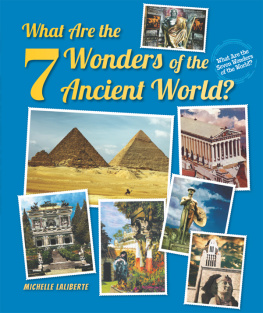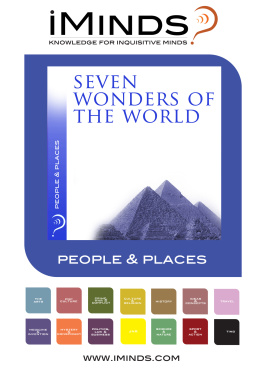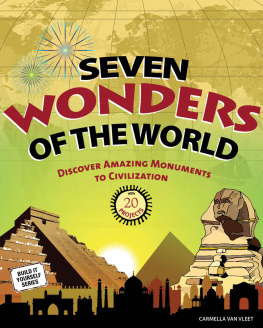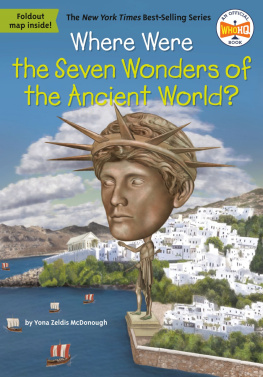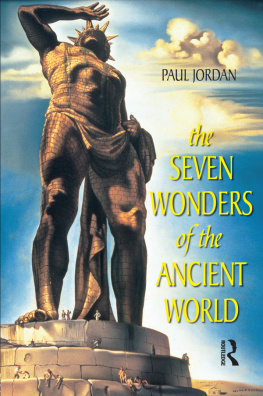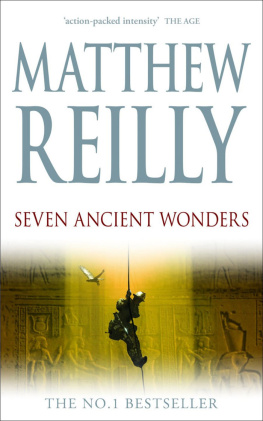Ancient World Wonders
The seven wonders of the ancient world have dazzled people with their beauty, size, and sheer magnificence. Majestic pyramids, grand monuments, and towering statues are among the many wonders to have graced the list. These include the Pyramids of Giza, the Hanging Gardens of Babylon, the Temple of Artemis, the Statue of Zeus, the Mausoleum at Halicarnassus, the Colossus of Rhodes, and the Lighthouse of Alexandria.
ABOUT THE AUTHOR
Michelle Laliberte is a mother, author, and environmental engineer. She spends her time writing on a variety of subjects in hopes of fostering creativity in others.


Image Credit: Howard David Johnson
The Lighthouse of Alexandria
Pyramids of Giza
- Located in Giza, Egypt, along the west bank of the Nile River
- The pyramids are the oldest and only surviving ancient wonder.
- The Pyramids of Giza were built somewhere between 2700 and 2500 B.C.
Hanging Gardens of Babylon
- The gardens are thought to have been located in Babylon, near present-day Baghdad, Iraq.
- Babylonian king Nebuchadnezzar is credited with having the gardens built.
- It is likely that they were built between 605 and 562 B.C.
Temple of Artemis at Ephesus
- The Temple of Artemis at Ephesus was built in what is now southwestern Turkey.
- It is one of the largest temples built by ancient Greek sculptors.
- The temple is often referred to as The Temple of Diana, the Roman name for the goddess Artemis.
Statue of Zeus
- The remains of the temple that housed the Statue of Zeus have been found in the ancient Greek city of Olympia.
- The statue was built in honor of the Olympic Games.
- It is estimated that the Statue of Zeus was built around 450 B.C.
Mausoleum at Halicarnassus
- Built about 353 B.C. by Queen Artemis to honor her husband, King Mausolus.
- Due to the size of Mausolus burial site, the word mausoleum came to mean a large tomb.
- The Mausoleum of Halicarnassus was located in what is now Bodrum, Turkey.
Colossus of Rhodes
- Located on the island of Rhodes, the colossus is said to have watched over the harbor.
- The large bronze statue was a representation of the sun god, Helios, also known as Apollo.
- Built around 282 B.C., it took the sculptor, Chares, twelve years to complete.
The Lighthouse (Pharos) of Alexandria
- Located on the Island of Pharos, off the coast of Alexandria, Egypt.
- The Lighthouse of Alexandria is believed to be the first and tallest lighthouse ever constructed.
- The lighthouse was likely built about 280 B.C., and stood until the A.D. 1200s.
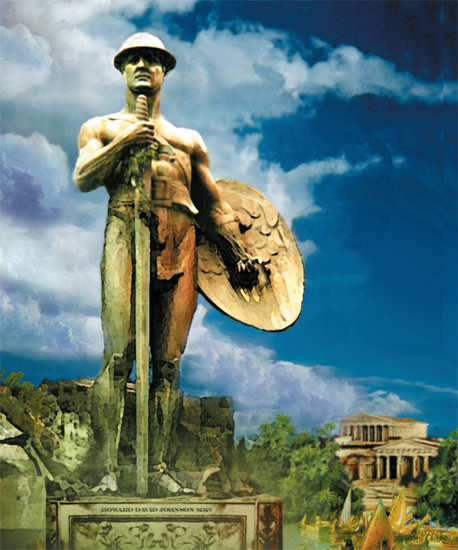
Image Credit: Howard David Johnson
The Colossus of Rhodes
Throughout history, the seven wonders of the ancient world have dazzled people with their beauty, size, and sheer magnificence. Majestic pyramids, grand monuments, and towering statues are among the many wonders to have graced the list. The wonders have evoked strong emotions. They also have awakened a curiosity in those who are astounded at the mystery of how such wonders were constructed without the use of modern machines or tools. To make things even more interesting and debatable, there is only one surviving wonder left in todays world. Much of what we know about most of the ancient wonders comes from texts left behind by ancient historians or from images on old coins.
Most experts agree that the seven wonders of the ancient world are the Pyramids of Giza, the Hanging Gardens of Babylon, the Temple of Artemis, the Statue of Zeus, the Mausoleum at Halicarnassus, the Colossus of Rhodes, and the Lighthouse (Pharos) of Alexandria. Five of the seven wonders were carved, cast, constructed, or sculpted by the best Greek artists and architects. Each wonder exhibits the representation of early human achievement through the advanced technological skill of those who built it, but each does so in an entirely different way.
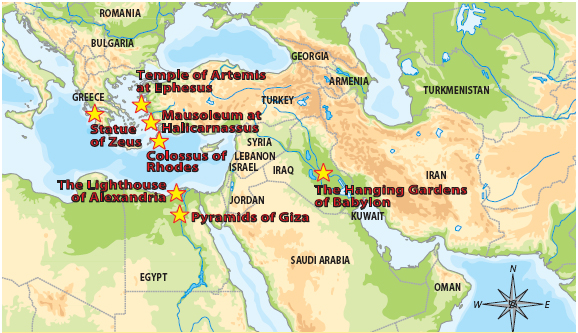
Image Credit: Enslow Publishers, Inc.
This modern map of Europe and the Middle East shows where the seven wonders of the ancient world would be located today. The Pyramids of Giza are the only ancient wonder still standing.
The Pyramids of Giza are the only remaining wonder of the seven that still exists close to its original form. They represent a supreme example of stone building. Their mass amazes all who are lucky enough to visit them.
The Hanging Gardens of Babylon are thought to have been designed as a present from a king to his homesick wife. The gardens were supposedly laid out on a brick terrace 394 square feet (120 meters squared) in area and 82 feet (25 meters) high. They had massive gardens, trees, and bushes that decorated the tall sloping terraces. Water was brought in by means of a chain pump that pulled the water from the nearby Euphrates River. The water would flow down the terraces, spreading out to all the gardens. The gardens were an example of skill in harnessing running water.
The Temple of Artemis at Ephesus was a massive monument that took more than 120 years to build. It was one of the largest temples built in ancient times. Its enormous size alone allows the temple to capture a place on the list of seven wonders.
The Statue of Zeus was an ivory and gold statue of the god Zeus. It was made by the Greek sculptor Phidias in the Greek city of Olympia, where the first Olympic Games took place.
The Mausoleum at Halicarnassus was a large tomb built to hold the remains of Mausolus, ruler of Caria, and his wife, Queen Artemisia. Built in 353 B.C., this 148-foot- (45-meter-) high marble tomb is the reason all large tombs since then have been called mausoleums. Today, the area once called Caria is located in southwest Turkey.
The Colossus of Rhodes looked like an ancient-day Statue of Liberty. It was located by the harbor of the Mediterranean island of Rhodes in what is now Greece. The statue was thought to have stood guard against incoming enemy ships. Built around 282 B.C., this 120-foot (33-meter) colossal statue dedicated to the sun god, Helios, demonstrated exceptional skill in bronze casting.
The seventh wonder, the Lighthouse of Alexandria, the tallest building in the ancient world, took fifteen years to build and stood 443 feet (135 meters) high. It is believed to have been more like a tower than a lighthouse. Built in three separate levels, the lighthouse did not resemble a modern-day lighthouse. It was a rectangular-shaped tower. There was mirror on top to reflect sunlight during the day, and a fire would guide ships safely into port at night.
Despite the differences in the designs and styles of each of the seven wonders, they all provide proof of the advanced capabilities of ancient technologies.
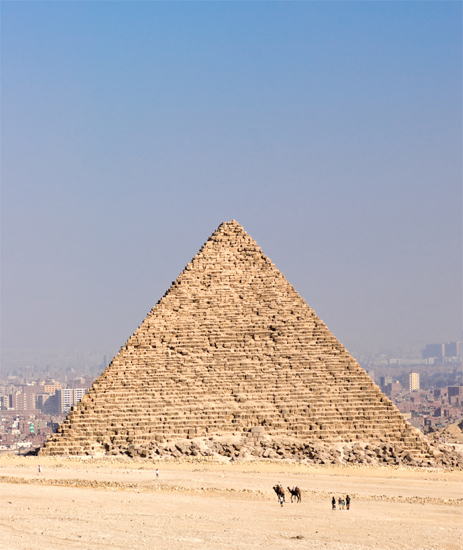
Image Credit: Shutterstock.com
Historians and archaeologists estimate that the Pyramids of Giza were built between 2700 and 2500 B.C.

